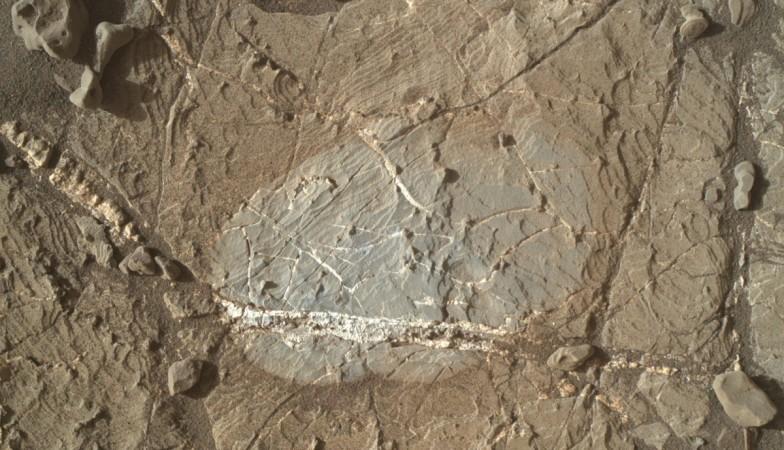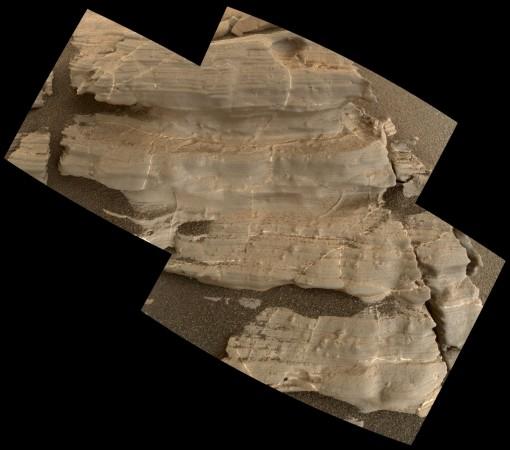
NASA's Curiosity Mars Rover has found star and swallowtail-shaped tiny, dark bumps on a Martian ridge that looks similar to gypsum crystals, which are formed in drying lakes on Earth.
The tiny and dark bumps are smaller than a sesame seed in size. Now Curiosity's science team is hoping that the rover's inspection might help them find the time when the crystal-shaped features were formed. They are also hoping that the inspection will clarify whether the original minerals are still there in these crystal-shaped features or were subsequently replaced by something else, NASA reported.
Researchers believe that answer to these questions may provide evidence of groundwater that flowed through the sediment after it became cemented into rock. The team is also investigating other clues to understand the history of the Red Planet.
"These shapes are characteristic of gypsum crystals. These can form when salts become concentrated in water, such as in an evaporating lake," Sanjeev Gupta, a Curiosity science team member at Imperial College, London, said in a statement from NASA's Jet Propulsion Laboratory. Gupta has studied gypsum crystals in the rocks of Scotland.
The Mars crystal-shaped features were discovered on the Vera Rubin Ridge, which stands out as an "erosion-resistant band on the north slope of lower Mount Sharp inside Gale Crater." The site was a planned destination for the rover and it started climbing the ridge five months ago.
In mid-January, the rover climbed to the site "Jura" to inspect an area where the bedrock is remarkably pale and gray, compared to the red, hematite-bearing bedrock forming most of Vera Rubin Ridge.

"These tiny 'V' shapes really caught our attention, but they were not at all the reason we went to that rock," Curiosity science-team member Abigail Fraeman of JPL said in a statement. "We were looking at the color change from one area to another. We were lucky to see the crystals. They're so tiny, you don't see them until you're right on them."
Curiosity team member Ashwin Vasavada said until now the mission provided evidence of relatively fresh water.
"So far on this mission, most of the evidence we've seen about ancient lakes in Gale Crater has been for relatively fresh, non-salty water," Vasavada said, adding: "If we start seeing lakes becoming saltier with time, that would help us understand how the environment changed in Gale Crater, and it's consistent with an overall pattern that water on Mars became more scarce over time."












